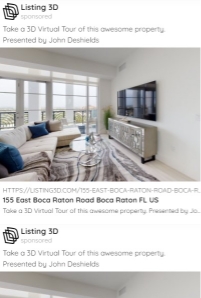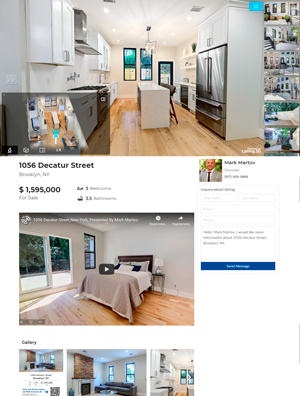How Much Does 3D Architecture Rendering Cost? An In-Depth Price Guide

Nowadays, computer programs are advanced enough to adapt the likeness of real-life 3D objects into stills or animations. Three-dimensional models are crucial not only for architecture and interior design but also for product rendering, photo simulation, video games, advertising, education, medicine, and many other industries where professionals need to visualize ideas, test designs, get the customers’ attention, or perform research.
For example, 3D models in education enable teachers to explain complex topics or take students on a virtual tour of an overseas historical site. In medicine, surgeons can train for surgery on three-dimensional anatomy models or patient-specific 3D renders.
Architectural renders, on the other hand, show the vast world of possibilities when it comes to building design and decor, making prospective buyers feel as if they’ve already made a home there.
But how much will a 3D-rendered model cost you? Well, the final sum may depend on many factors, and we will explore them all to give you ballpark figures.

Factors Influencing 3D Architectural Rendering Cost
Before you decide how much to spend on a 3D render, you should know what affects the price. Read carefully and plan your projects to ensure a balance between affordability and quality:
- Project complexity and detail — Intricate and detailed designs command higher prices. For instance, a fully-animated 3D render of the property, complete with all the textures, landscaping, furniture, and decoration, will surely set you back more than basic linework in black and white.
- Rendering resolution and output format — Higher-quality models require more rendering time, which makes the cost go up. Similarly, the output format you prefer can require specialized software or a longer development time, adding to the price. For example, creating a full virtual reality tour starts at $1 per square foot.
- Software and hardware requirements — The software and hardware professional 3D artists use can be pricey. Standard versions of 3D-rendering programs can cost upwards of $1,000 a year, not to mention plugins and add-ons.
- Professional experience and expertise — Experienced professionals have done thousands of renders, so they know the ins and outs of the software, hardware, and 3D rendering types and techniques. Though hiring an expert may be expensive, it will pay off in the end, as you’ll be sure the quality is top-notch.
- Project timeline and deadlines — Typically, you’ll need to pay rush fees if you want the results in the shortest time possible.
- Post-production and revisions — Depending on the client’s wishes, professionals can add various effects and retouch renders in post-production or make revisions later if the client asks. So, if you want to add multiple details and make extensive modifications, it will undoubtedly jack up the price.
Types of 3D Rendering and Their Cost Implications
Three-dimensional rendering has found use in many industries, from architecture to advertising. However, each application comes with its own requirements, techniques, skill sets — and prices.
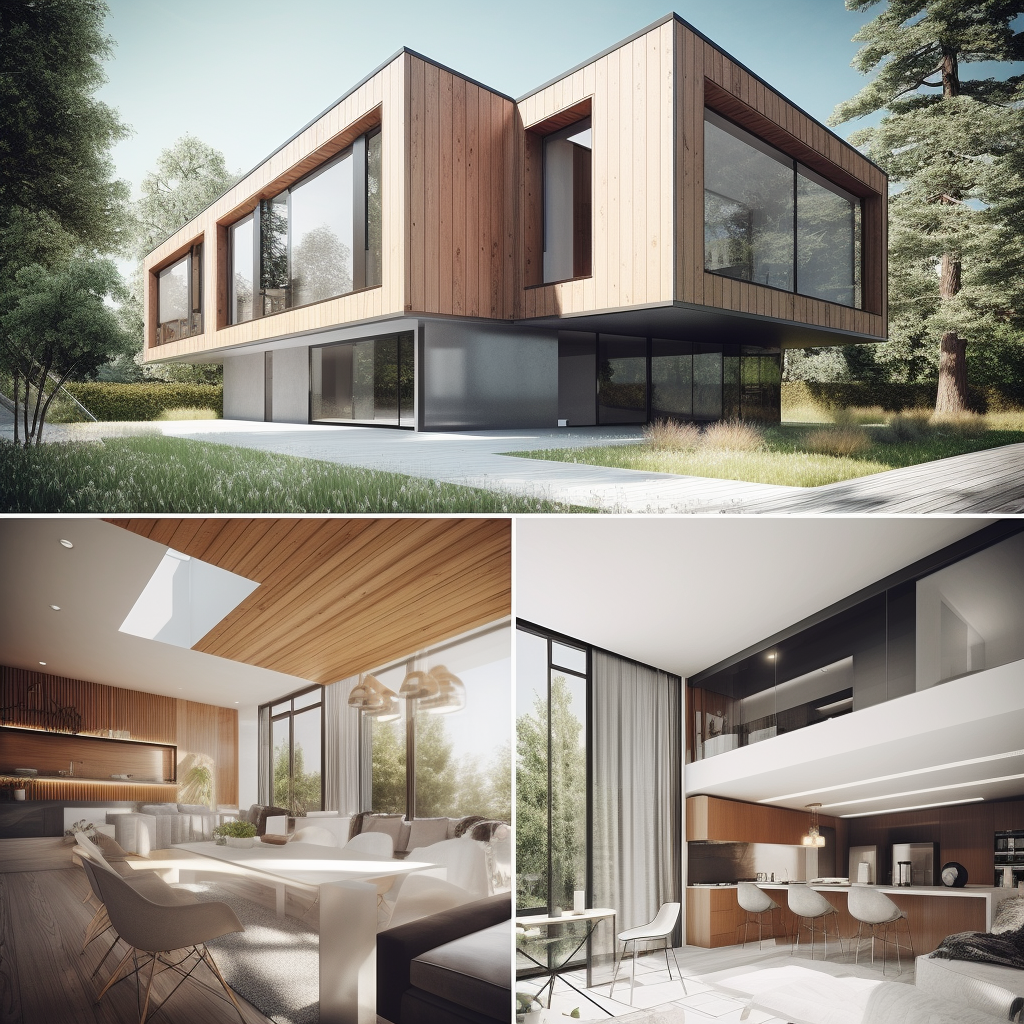
Architectural Rendering
Architectural rendering bridges the gap between art and technology by combining the best of both worlds. It gives designers and architects endless possibilities to unleash their creativity and make their designs come to life.
3D-rendered house plans will show you exactly how your dream home will look — from base to roof — even before the first stone is laid.
The price depends on the provider, but you can generally expect to cash out at least $199 for an HQ architectural render.
Product Rendering
Nowadays, product design, manufacturing, and marketing are practically unimaginable without 3D rendering. Product rendering aims to preview a product, its features, and functionality by demonstrating its benefits to potential customers or investors. Furthermore, it enables testing the prototype designs before the product goes into production.
3D rendering agencies will charge you anywhere from $50 to $550, but if you ask them to design a complex product with many features and parts, you should expect to spend up to $5,000.
Interior Rendering
As the name implies, interior rendering involves creating three-dimensional images or animations of commercial or residential interior spaces. Aside from its use in architecture and interior design, interior rendering has gained momentum in real estate tours during the recent pandemic.
Most companies offer 3D-rendered floor plans or entire home models; however, individual 3D room models can also be done. It’s possible to create renderings in various image qualities, from simple linework to fully colored and furnished spaces. Naturally, the price increases with the quality and level of detail.
Moreover, prices differ if you ask for a single room render or wish to include other spaces, but you can expect them to start at $249 (per room).
Exterior Rendering
This type of 3D rendering focuses on the building’s exterior (walls and roof details, materials, window placement, etc.). It can include additional elements like trees, flower beds, outdoor decorations, and paved garden paths.
An exterior project’s price point will vary based on how many details you want to add. For instance, the cost will be lower if you opt for a simple model that doesn’t go beyond the building itself. Generally, though, a 3D exterior render starts at about $349.
Animation and Visual Effects
3D animation and visual effects can add an extra flair to your projects, making them more engaging, dynamic, and realistic as a result. However, these elements can significantly rack up the price since they require more work to create or blend into the visual environment. Some companies may charge you $2,500 for a single minute of animation — and that’s considered affordable in the industry!
Pricing Models for 3D Rendering Services
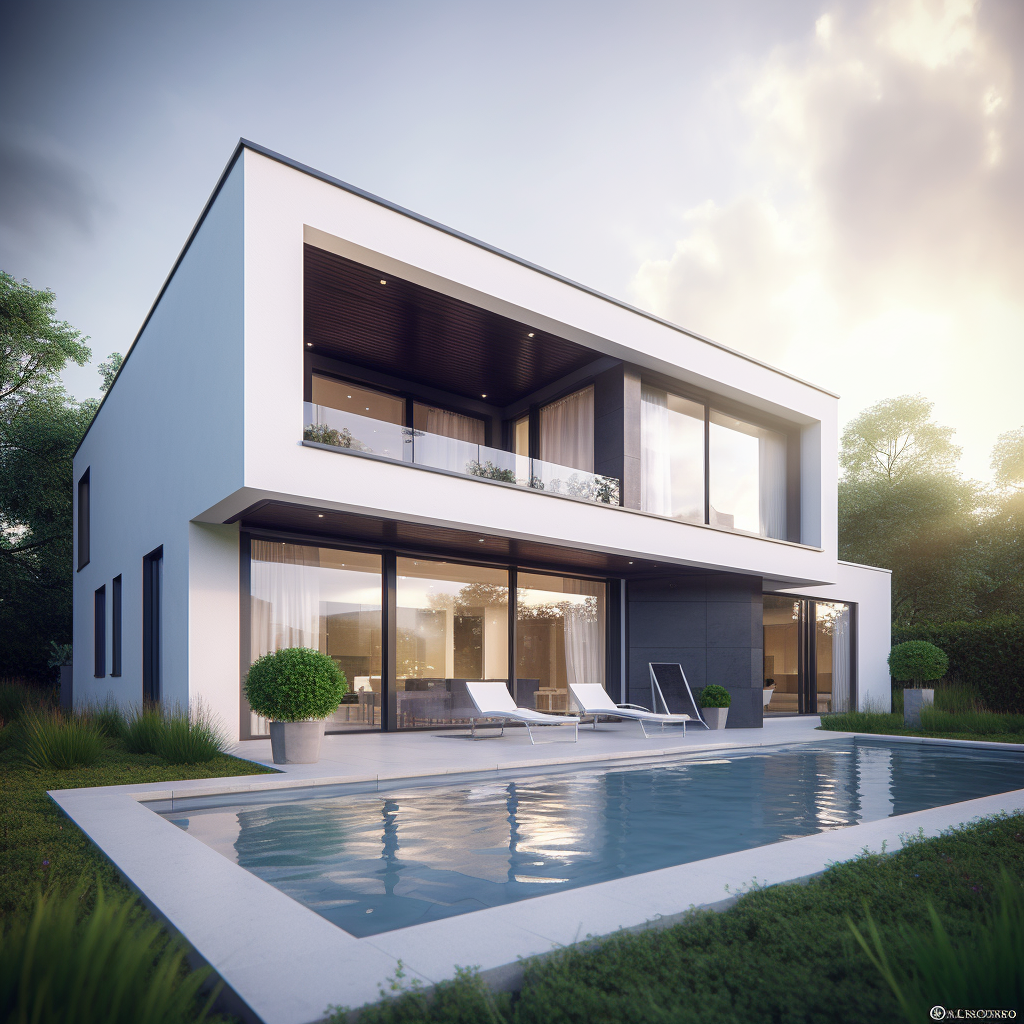
By adding 3D technology and photorealistic 3D models to their portfolios, many businesses have stepped up their game. While professional 3D rendering agencies all offer similar services, their prices may be quite different.
The cost discrepancy stems from a multitude of factors, including the way professionals calculate the price of their services and products. So, to ensure you’re getting the most bang for your buck, you must understand the following pricing models and their advantages and disadvantages.
Fixed-Rate Pricing
When someone charges a fixed (flat) amount for their work, the time and effort required are usually not taken into account. While you may be able to find companies offering flat rates for their services, it’s not very common — perhaps because not all projects require the same level of commitment.
Fixed-rate pricing models could work well for companies offering well-defined projects and clients who have their mind set on particular features without demanding additional modifications. However, if the scope of work changes or some design revisions come up, it may be challenging to adjust prices, which may, in turn, leave 3D artists overworked and underpaid.
Additionally, clients should be aware that fixed prices across the board may indicate something’s off. The company (especially one that’s not well known) may be selling fake images or delivering poor-quality or run-of-the-mill results, so you should do your research and read the reviews.
Hourly-Rate Pricing 3D Architectural Rendering
Businesses can also charge a set hourly rate for their 3D projects, from $20 to $120 per hour. This is a flexible pricing model that accommodates workload changes and adjustments.
Per-hour fees may suit those clients who have smaller projects or are on a shoestring. On the other hand, if your project is more complex, it won’t be easy to estimate how much money you’ll spend. Because of this, some may feel an hourly rate doesn’t accurately reflect how much a project will cost.
Per-Image Pricing 3D Architectural Rendering
With per-image pricing, you are charged a set price for each rendering, or a variable price if you purchase more. Keep in mind that a single shot may cost you more money than a multiple renderings. That’s because your work providers already have the initial setup ready; thus, they can easily scale the price down.
Pay-per-image model is a godsend for smaller and more basic projects, like house exteriors, which don’t require much time or images.
Nevertheless, if a project asks for a large number of shots, things can add up — both in terms of waiting time and cost.
Customized Project-Based Pricing 3D Architectural Rendering
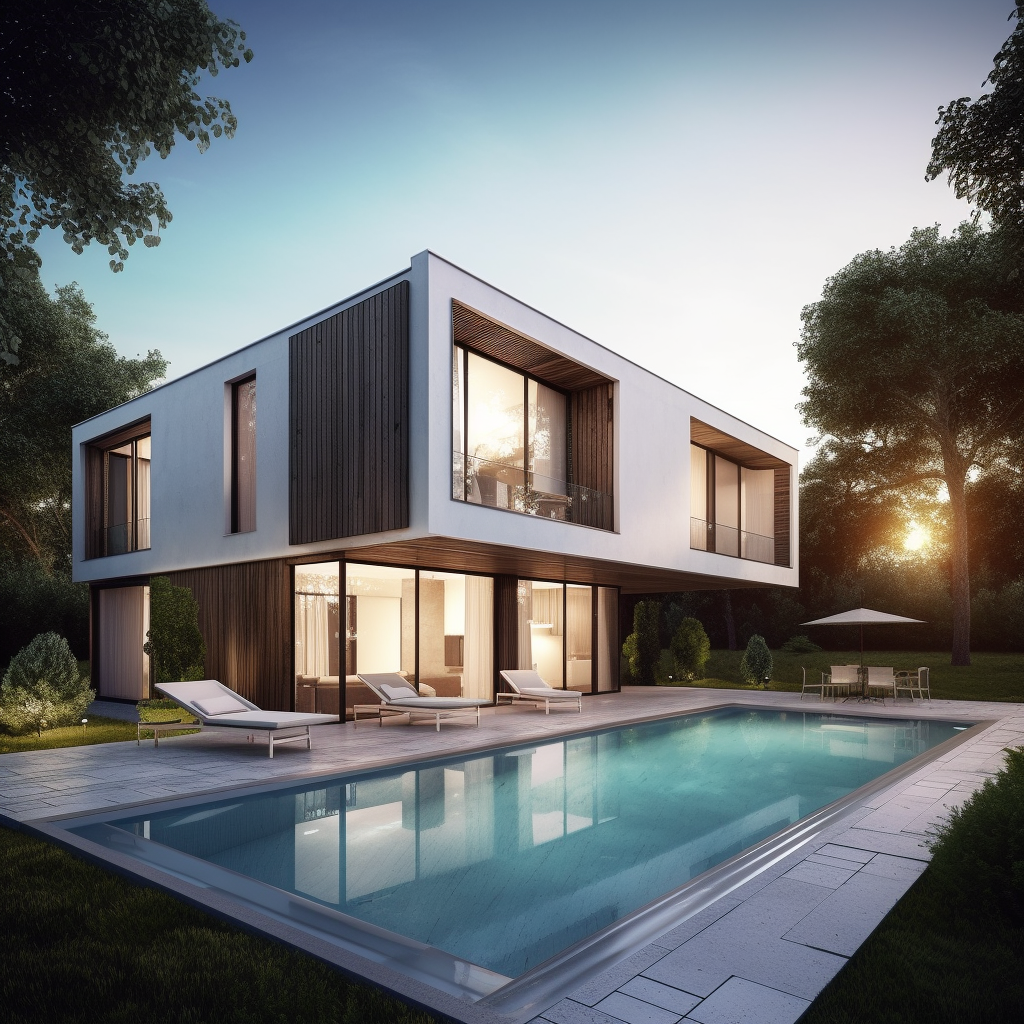
When creating a custom quote, providers account for different project requirements (time, scale, and details). They’ll typically ask you for a sketch or a blueprint (if you have one) and all the specifics you want to add. Then, you will receive a reply with a quote as soon as possible.
Project-based pricing may be the best for a larger-scale rendering, as it provides a well-balanced arrangement for both parties. Moreover, it shouldn’t be hard to adjust the additional work-price ratio — and you can also ask for volume discounts.
The main downside of customized pricing is that it requires more back-and-forth negotiation with the company. It may also not be to your liking if you’re looking for fixed costs or a clear pricing structure.
How to Estimate 3D Rendering Costs
The cost is probably the first thing you want to consider whenever you’re looking to hire any professional. In the case of 3D-rendered projects, it’s not that easy to get a rough calculation, let alone the exact amount. Still, if you follow these steps, you’ll come closer to putting a number to it:
- Identify project requirements and scope — Consider everything you want your project to include (details, effects, view angles, animations, sound effects, etc.) and the potential deadlines. It’s best to make notes so that you have everything in one place.
- Research market rates for similar projects — The next step is to go online and look up how much projects of similar scale go for, as it will give you a pretty good idea of the price. If you’re pressed for time, see how much providers typically charge for rush orders.
- Request quotes from multiple service providers — Don’t hesitate to contact various companies and ask for price estimates and services included. When you reach out, give them as many details as possible — this will help them determine the cost more accurately.
- Evaluate offers based on quality, expertise, and value for money — Take a piece of paper (or open a Note app on your phone) and list the pros and cons of the companies you’ve contacted, mainly focusing on their quality, expertise, and value for money. You should hire a company with years of experience that offers an accurate and detailed product and provides the best price-quality ratio.
Tips for Reducing 3D Rendering Costs
Although 3D rendering isn’t cheap, there are several things you can do to bring the overall cost down without breaking the bank or compromising on the quality.
- Streamlining project requirements and communication — Communication is key in any aspect of life, including the process of working with a 3D rendering company. If you clearly define your goals and list everything you need upfront, you’ll save time and money on revisions.
- Utilizing pre-built 3D models and assets — Many rendering agencies let clients submit their own 3D, and then they build on it at a lower price. You can find numerous ready-made 3D models online; some won’t even cost you a dime!
- Investing in software and hardware upgrades for in-house projects — If you decide to learn 3D rendering to avoid outsourcing, you should get professional software and hardware because they will allow you to take on more demanding tasks and finish them quicker.
- Exploring alternative rendering techniques and technologies — If you have a mighty graphic card, consider switching to the GPU (graphic processing unit) rendering because it’s faster than its traditional CPU (central processing unit) counterpart. Regarding software, there are many open-source options on the market (3ds Max Design, Cinema 4D, SketchUp Free, ZBrush, etc.), so you can also cut your costs there. Additionally, real-time rendering engines, like Unreal Engine, let you see 3D images in real-time and make adjustments promptly.
- Outsourcing to cost-effective service providers — Instead of learning new software and spending money on hardware components and expensive programs, you can entrust the entire process to a cost-effective rendering company. If you opt to go down this road, go back to the previous section of this article, and revise the steps.
Conclusion
The prices for 3D rendering vary between companies and depend on the type of rendering, project scope, image quality, effects and animation, software used, deadlines, potential revisions, and the provider’s expertise.
Even though it’s generally not easy to determine the final price without contacting the company, you can still carefully review every feature you want in your 3D render and research how much similar projects cost. After that, you can get quotes from different providers and narrow down the choice based on their expertise, quality, and prices.
Regardless of whether you’re only considering branching out into 3D rendering or if you’ve already established yourself in the field, you need to keep up with the ever-evolving software and rendering techniques and splurge on powerful hardware. This will produce better results, bring you more clients, and give you an edge over the competition.
Additional Services
Take Your Marketing Even Further

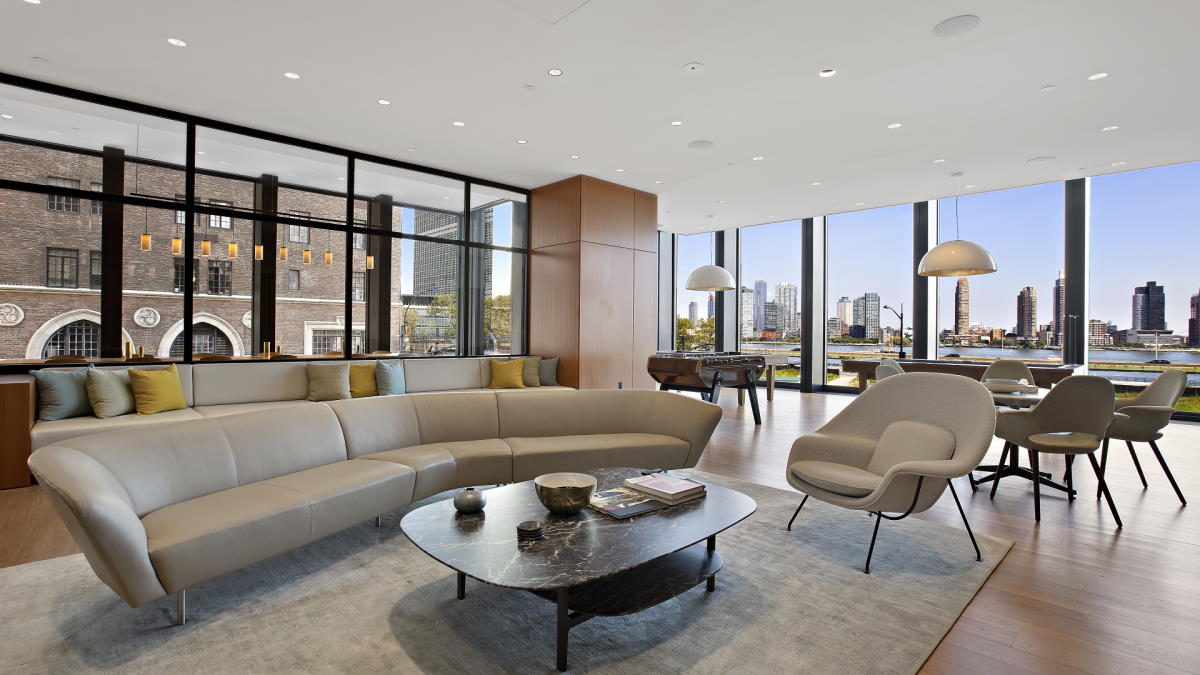
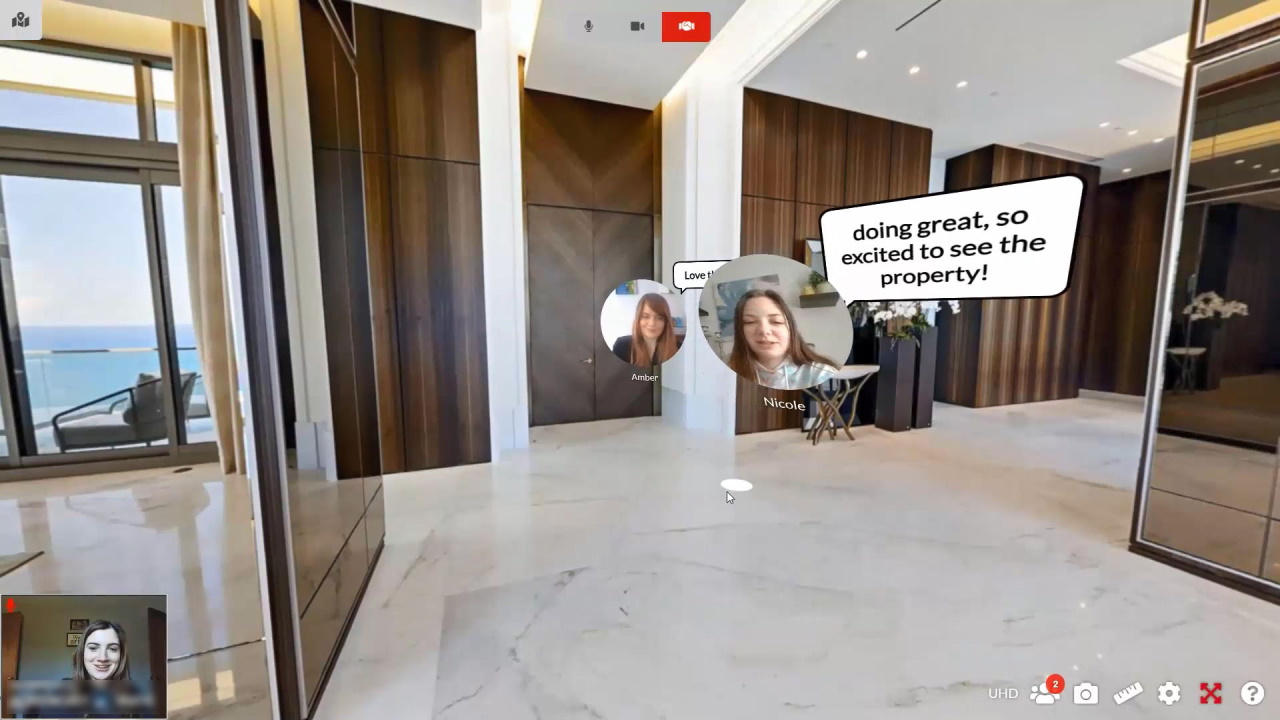



Additional Features at no cost
Part of any package


